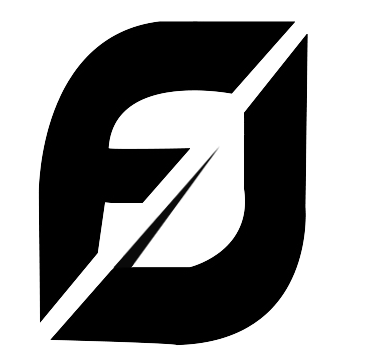In the ever-evolving world of fashion, one material has quietly made a bold return—sequins. Once seen as purely ornamental and limited to festive occasions, sequins are now central to global fashion conversations. From runway shows and streetwear to digital retail and influencer content, sequins have become a powerful visual language in contemporary style.
But this resurgence is about more than just aesthetics. It reflects a broader shift in how sequins are produced, accessed, and consumed. At the heart of this shift is a new generation of Indian textile artisans and smart digital platforms like FabricDiary.com, which are reshaping the global supply chain and making Indian craftsmanship more accessible than ever before.
The Return of Sequins
Until recently, sequins were often viewed as seasonal or event-specific embellishments. Today, they’re part of everyday fashion—from Instagram reels to red carpet appearances. The rise of visually driven platforms like TikTok, Instagram, and YouTube has fueled demand for materials that pop on screen. Sequins, with their reflective quality and textural depth, are now a staple in the visual-first economy of fashion.
As designer Anamika Khanna puts it, “Sequins are no longer ‘extra’—they’re expected.”
India’s Role in the Craft Revival
India has long been a global leader in embroidery, zari work, and hand embellishments. Cities like Surat, Lucknow, and Jaipur have mastered these techniques over generations. However, access to these crafts was traditionally limited by complex sourcing chains and physical trade expos.
Today, digital platforms like FabricDiary.com are closing that gap. They’re enabling direct access to Indian sequin fabrics for global buyers—from boutiques in Paris to emerging brands in São Paulo. By offering detailed product photography, SEO-optimized listings, and integrated ordering via WhatsApp, these platforms are making Indian craftsmanship globally visible and commercially viable.
The Digital Supply Chain
Sequins have gained traction across the retail landscape. Brands such as H&M, Uniqlo, Mango, ASOS, and Nordstrom are incorporating shimmering fabrics into their collections. Sequins aren’t just a trend—they’re part of a broader demand for standout materials that perform well across social media and e-commerce platforms.
FabricDiary’s strategy is rooted in building a future-ready supply chain. By focusing on metadata, smart cataloging, and legally compliant design inspiration, the platform ensures that Indian fabrics can compete alongside major global brands in search rankings and retail visibility.
What was once a slow, negotiation-heavy process—often taking months—is now digitized. Buyers can review samples, confirm designs, and place orders with tracking support in just a few clicks.
What Today’s Buyers Expect
Modern fashion buyers, from wholesalers to independent designers, now look for:
-
Seamless WhatsApp-based communication
-
Instant access to fabric samples
-
Legally safe, designer-style inspiration
-
Curated regional bundles (e.g., “Punjab Bridal,” “Tamil Nadu Festive”)
-
Scalable logistics and global courier support
This level of convenience and transparency is changing the game, especially for smaller fashion houses and startups.
A Material for the Moment—and the Future
Sequins are no longer a novelty. FabricDiary has reported a 300% increase in demand for gold and silver sequin fabrics with line patterns over the past two quarters. Use cases now span:
-
Performance and stage wear
-
Fusion and luxury fashion
-
Bridal and pre-bridal garments
-
Streetwear and experimental menswear
This demand is global, stretching from Tokyo and Seoul to Toronto and London. And it’s being met by a digitized supply chain that brings Indian craftsmanship directly to global buyers.
A Smarter Buyer Journey
Today, global fashion businesses are discovering Indian fabrics not through trade expos, but through simple Google searches like “buy bridal gold sequin fabric wholesale.” Indian suppliers who leverage SEO, smart catalog design, and fast response systems are gaining a competitive edge.
Key features now include:
-
Region- and use-case-specific fabric bundles
-
Visual matching tools for designers
-
Digital invoicing and instant global shipping
-
Flexible MOQ and cut-pack options
What used to take weeks now happens in minutes.
Building for Flexibility and Scale
FabricDiary’s model supports a diverse buyer base:
-
Design students purchasing small batches
-
Bridal boutiques sourcing in multiple colors
-
International labels scaling for ready-to-wear collections
With customizable order quantities, stitched sample support, and visual lookbooks, the platform serves both inspiration and execution—without compromising the heritage of the craft.
Towards a Sustainable Future
The sequin revival isn’t just about surface-level shine—it’s about deeper transparency and innovation. FabricDiary and similar platforms are beginning to integrate:
-
Recycled yarns and eco-friendly embellishments
-
Hybrid dyeing techniques using natural pigments
-
QR-coded fabric tags that trace back to individual artisans
-
AI tools that assist designers in fabric-matching and sourcing decisions
This combination of craft and technology represents India’s next major export—not just textiles, but a sustainable philosophy of fashion.
Beyond Fabric: A New Fashion Ecosystem
Sequins may catch the light, but the true brilliance lies in what they represent. Platforms like FabricDiary are proving that with the right tools, Indian textile artistry can lead on the world stage—not as a low-cost alternative, but as a premium, agile, and future-ready partner.
They’re not just selling fabric.
They’re selling a new vision for fashion—built on trust, transparency, and timeless skill.






